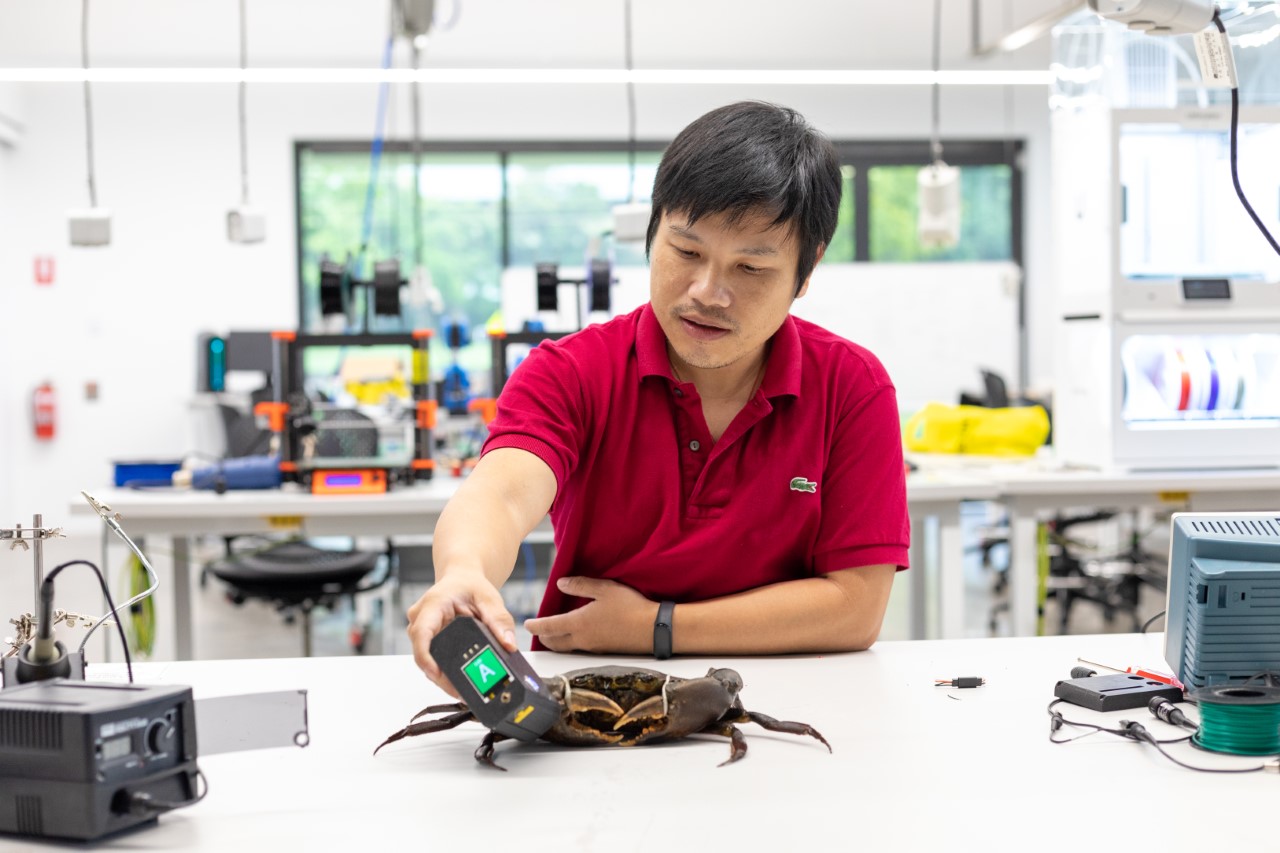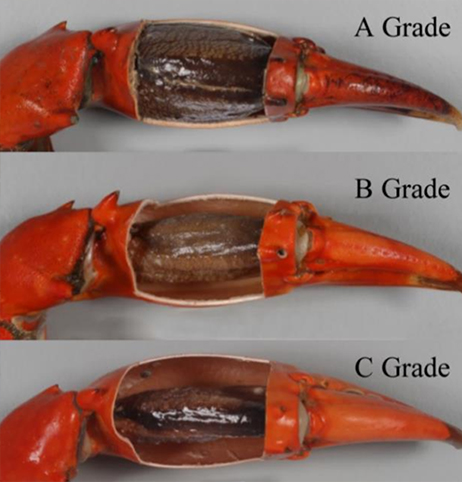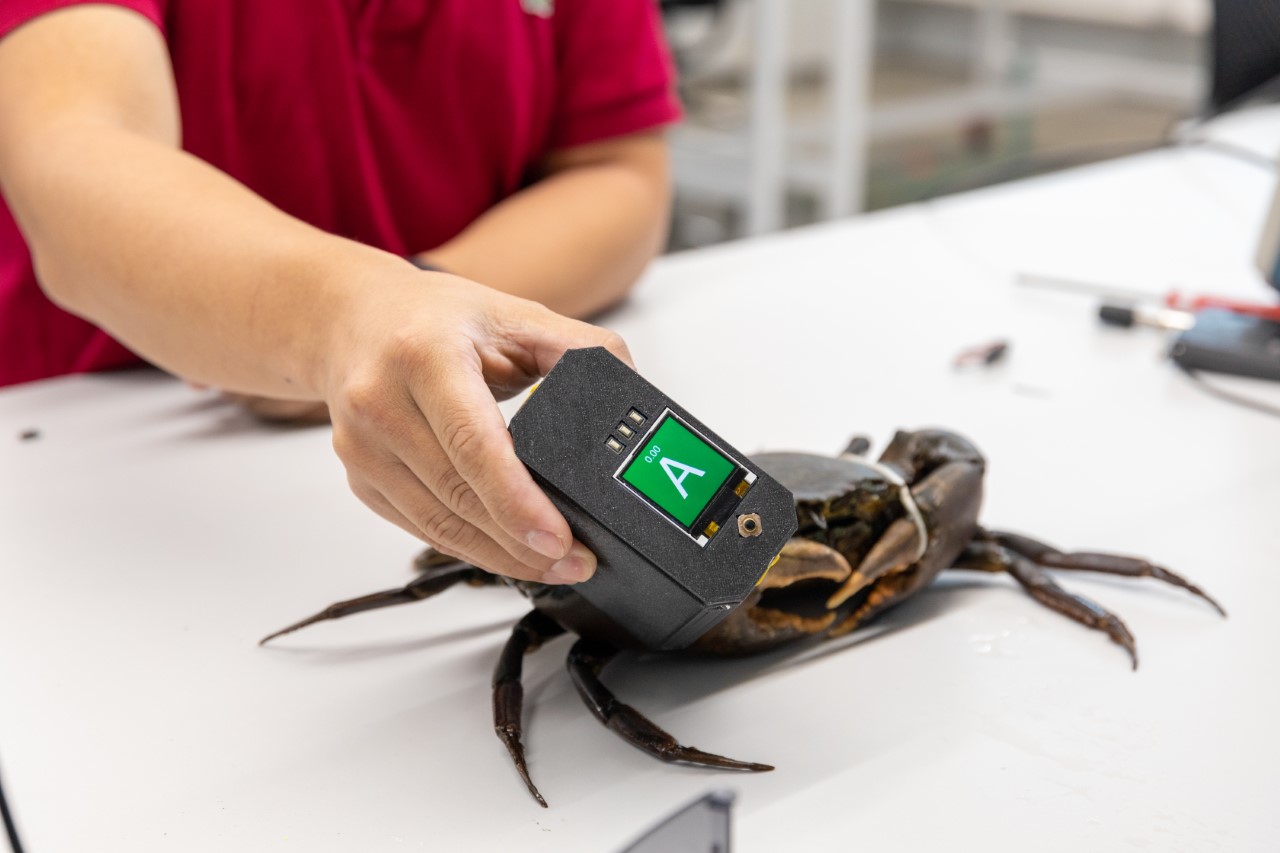Agriculture Technology and Adoption Centre (AgTAC) Projects How much meat is in that mud crab?
How much meat is in that mud crab?
- Future Students
- JCU Global Experience
- International Students
- Open Day
- How to apply
- Pathways to university
- Virtual Open Day
- Living on Campus
- Courses
- Publications
- Scholarships
- Parents and Partners
- JCU Heroes Programs
- Aboriginal and Torres Strait Islander in Marine Science
- Elite Athletes
- Defence
- Current Students
- New students
- JCU Orientation
- LearnJCU
- Placements
- CEE
- Unicare Centre and Unicampus Kids
- Graduation
- Off-Campus Students
- JCU Job Ready
- Safety and Wellbeing
- JCU Prizes
- Professional Experience Placement
- Employability Edge
- Art of Academic Writing
- Art of Academic Editing
- Careers and Employability
- Student Equity and Wellbeing
- Career Ready Plan
- Careers at JCU
- Partners and Community
- JCU-CSIRO Partnership
- Alumni
- About JCU
- Reputation and Experience
- Chancellery
- Governance
- Celebrating 50 Years
- Academy
- Indigenous Engagement
- Education Division
- Graduate Research School
- Research and Teaching
- Research Division
- Research and Innovation Services
- CASE
- College of Business, Law and Governance
- College of Healthcare Sciences
- College of Medicine and Dentistry
- College of Science and Engineering
- CPHMVS
- Anthropological Laboratory for Tropical Audiovisual Research (ALTAR)
- Anton Breinl Research Centre
- Agriculture Technology and Adoption Centre (AgTAC)
- Advanced Analytical Centre
- AMHHEC
- Aquaculture Solutions
- AusAsian Mental Health Research Group
- ARCSTA
- Area 61
- Lions Marine Research Trust
- Australian Tropical Herbarium
- Australian Quantum & Classical Transport Physics Group
- Boating and Diving
- Clinical Psychedelic Research Lab
- Centre for Tropical Biosecurity
- Centre for Tropical Bioinformatics and Molecular Biology
- CITBA
- CMT
- Centre for Disaster Solutions
- CSTFA
- Cyclone Testing Station
- The Centre for Disaster Studies
- Daintree Rainforest Observatory
- Fletcherview
- JCU Eduquarium
- JCU Turtle Health Research
- Language and Culture Research Centre
- MARF
- Orpheus
- TESS
- JCU Ideas Lab
- TARL
- eResearch
- Indigenous Education and Research Centre
- Estate
- Work Health and Safety
- Staff
- Discover Nature at JCU
- Cyber Security Hub
- Association of Australian University Secretaries
- Services and Resources Division
- Environmental Research Complex [ERC]
- Foundation for Australian Literary Studies
- Gender Equity Action and Research
- Give to JCU
- Indigenous Legal Needs Project
- Inherent Requirements
- IsoTropics Geochemistry Lab
- IT Services
- JCU Webinars
- JCU Events
- JCU Motorsports
- JCU Sport
- Library
- Mabo Decision: 30 years on
- Marine Geophysics Laboratory
- Office of the Vice Chancellor and President
- Outstanding Alumni
- Pharmacy Full Scope
- Planning for your future
- Policy
- PAHL
- Queensland Research Centre for Peripheral Vascular Disease
- Rapid Assessment Unit
- RDIM
- Researcher Development Portal
- Roderick Centre for Australian Literature and Creative Writing
- Contextual Science for Tropical Coastal Ecosystems
- State of the Tropics
- Strategic Procurement
- Student profiles
- SWIRLnet
- TREAD
- TropEco for Staff and Students
- TQ Maths Hub
- TUDLab
- VAVS Home
- WHOCC for Vector-borne & NTDs
- Media
- Copyright and Terms of Use
- Australian Institute of Tropical Health & Medicine
- Pay review

Dr Eric Wang demonstrating the Near-infrared spectrometer
Currently, the common practice for measuring the meat in live mud crabs is for the fisher to apply thumb pressure to the carapace of the mud crab. The subjective nature of this method of assessment can result in disputes at the boundaries of the grades.
Dr Eric Wang, JCU Senior Lecturer, Electronic Systems and IoT Engineering, together with the Department of Agriculture Fisheries and Forestry (DAFF) are developing a near-infrared spectrometer (NIRS).
Initial studies have proven the NIRS to be an objective science-based technology to determine the meat content of the live mud crab. The handheld instrument is designed to be taken on fishing boats and be able to quickly grade live crabs, allowing fishers to optimise their catch and return low-grade crabs to the water.
Dr Eric Wang
“It will allow a fisher or a market stallholder to point this device over a crab’s claw or carapace and determine what grade it is so there is no ambiguity around the meat content.”

How much meat is in that mud crab? This is most commonly assessed by using thumb pressure applied to the carapace of the mud crab. The subjective nature of this assessment will always result in disputes at the boundaries of the grades. Initial studies by the Department of Agriculture and Fisheries (DAF) has proven the near-infrared spectrometer (NIRS) to be an objective science-based technology to determine the meat content of live mud crabs. This project will develop a handheld instrument designed to be taken on the fishing boat that can quickly grade live crabs, allowing fishers to optimise their catch and return low-grade crabs to the water.

Mud crab claw grades
JCU collaborators at the Department of Agriculture and Fisheries (DAF) were the first in the world to apply non-invasive near-infrared spectroscopy (NIRS) technology to determine the meat content of live mud crabs. Initial studies by DAF and the Fisheries Research and Development Corporation on mud crabs demonstrated the technique was very effective and could help tackle the problem of predicting the meat fullness of mud crabs.
This project will develop a cost-effective, fisherman-friendly, and harsh environment proof handheld near-infrared spectrometer to predict the grade (meat fullness) of mud crabs. It will be specifically designed to be easy to use in the challenging environment of a fishing boat.
The technology will allow the industry to guarantee premium quality mud crab based on meat fullness, increasing profitability and returns along the entire supply chain by ensuring consumer satisfaction and increasing repeat sales.

Near-infrared spectrometer (NIRS) in use
Developing a science-supported assessment technique would standardise grading and allow for a seasonal and/or regional anomalies to be addressed. Ultimately, there is a need for a cost-effective, robust and practical, onboard objective tool to provide consistent and assured grading standards. The developed device could increase profitability and returns along the entire supply chain by ensuring consumer satisfaction and increasing repeat sales.
Project timeline
2020-2022
Contact details
Dr Eric Wang
Senior Lecturer, Electronic Systems and IoT Engineering
+61 7 4232 1470
